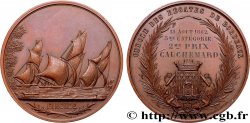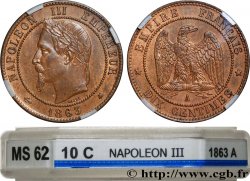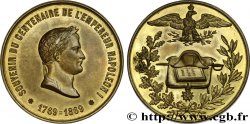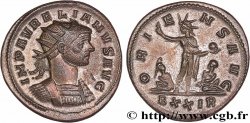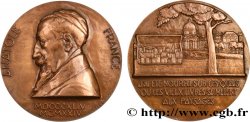无库存.
所有在网站上销售的产品 (2019)
价格 : 120.00 €
所有在网站上销售的产品 (2019)
价格 : 120.00 €
种类 Médaille pour le graveur Jacques-Jean Barre
日期: n.d.
材质 copper
直径 59 mm
模子方针 12 h.
硬币制模工 BARRE Albert Désiré (1818-1878) / BARRE Jean-Auguste (1811-1896)
重量 93,75 g.
侧面 lisse + abeille CUIVRE
印模 Abeille (1860 - 1880) CUIVRE
关于品相的说明
Superbe médaille avec de beaux reliefs et une agréable patine de collection
正面
正面的文字 ANÉPIGRAPHE.
正面的说明书 Tête nue de Jacques Jean BARRE en haut relief à droite dans un grènetis.
背面
背面的文字 JACQUES JEAN / BARRE / GRAVEUR GÉNÉRAL / DES / MONNAIES / 3 AOUT 1793 / 10 JUIN 1855.
背面的说明书 Légende en 7 lignes horizontales.
评论
Intéressante médaille en hommage au graveur Jacques-Jean Barre, réalisée par ses deux fils Auguste Barre et Désiré-Albert Barre.
Jacques-Jean Barre (né le 3 août 1793 à Paris et mort le 10 juin 1855 à Paris) est le 17e graveur général des monnaies à la Monnaie de Paris de 1842 à 1855. Il est le dessinateur et graveur des deux premières séries de timbres-poste de France, les types Cérès et à l'effigie de Napoléon III.
Son fils cadet, Désiré-Albert Barre (Paris 6 mai 1818-29 décembre 1878) lui succède à ce poste de Graveur général des monnaies. C'est à lui que l'on doit notamment la gravure des monnaies et des timbres du Second Empire à l'effigie de Napoléon III à tête laurée. Il est également le père de la médaille de Sainte-Hélène. Il rompt cependant avec Anatole Hulot en 1866.
Son fils ainé, Jean-Auguste Barre, sculpteur remarqué, et portraitiste attitré de la famille impériale, succède à son frère cadet en tant que Graveur général des monnaies en 1878 sous la IIIe République mais n'occupe cette fonction qu'une année..
Jacques-Jean Barre (né le 3 août 1793 à Paris et mort le 10 juin 1855 à Paris) est le 17e graveur général des monnaies à la Monnaie de Paris de 1842 à 1855. Il est le dessinateur et graveur des deux premières séries de timbres-poste de France, les types Cérès et à l'effigie de Napoléon III.
Son fils cadet, Désiré-Albert Barre (Paris 6 mai 1818-29 décembre 1878) lui succède à ce poste de Graveur général des monnaies. C'est à lui que l'on doit notamment la gravure des monnaies et des timbres du Second Empire à l'effigie de Napoléon III à tête laurée. Il est également le père de la médaille de Sainte-Hélène. Il rompt cependant avec Anatole Hulot en 1866.
Son fils ainé, Jean-Auguste Barre, sculpteur remarqué, et portraitiste attitré de la famille impériale, succède à son frère cadet en tant que Graveur général des monnaies en 1878 sous la IIIe République mais n'occupe cette fonction qu'une année..







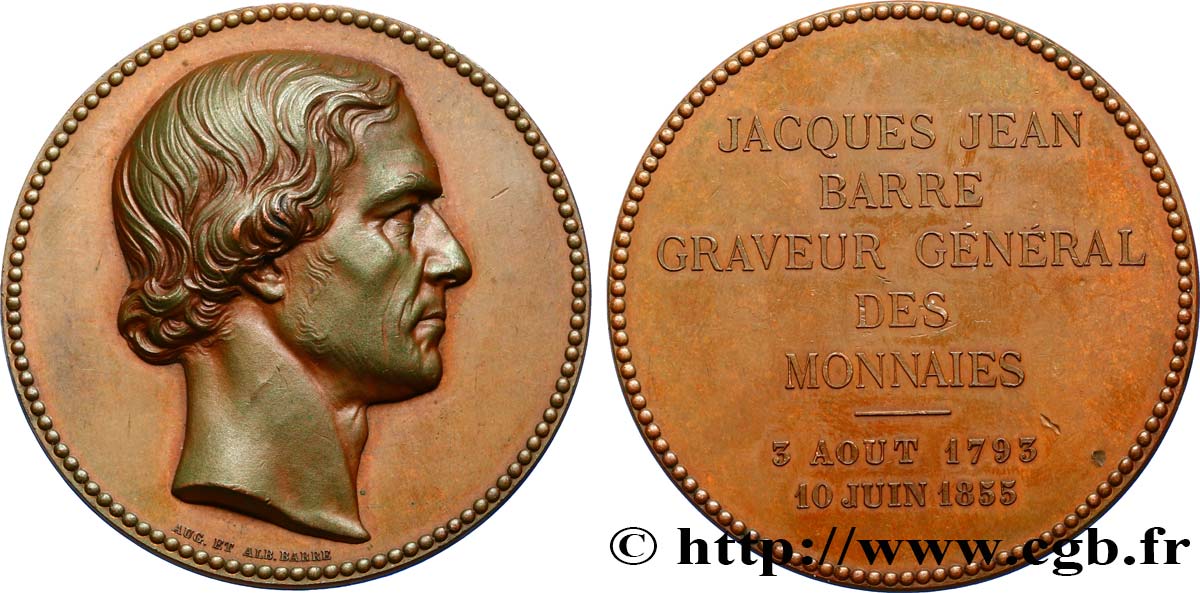
 对产品描述纠错
对产品描述纠错 打印
打印 分享我的选择
分享我的选择 提问
提问 Consign / sell
Consign / sell
 产品介绍
产品介绍